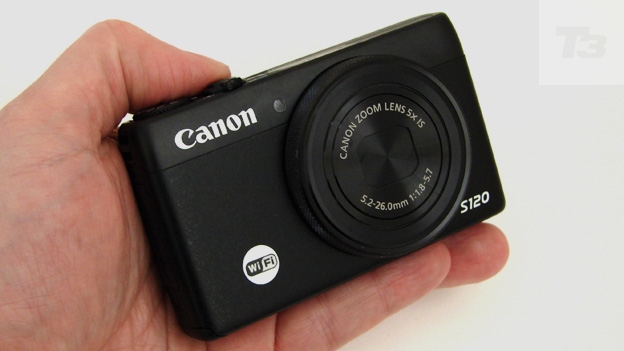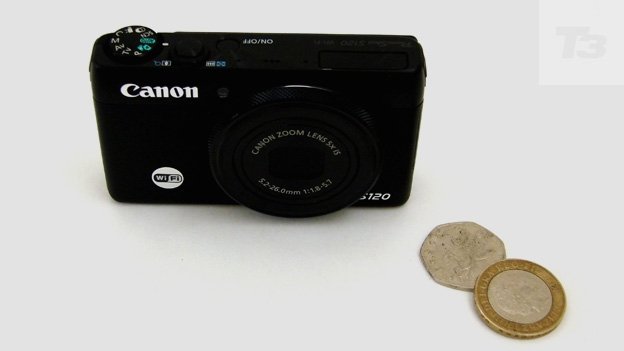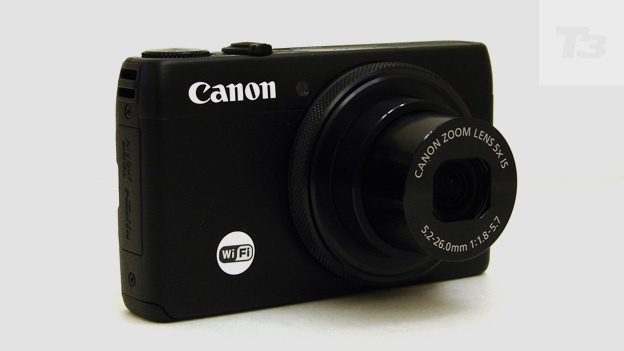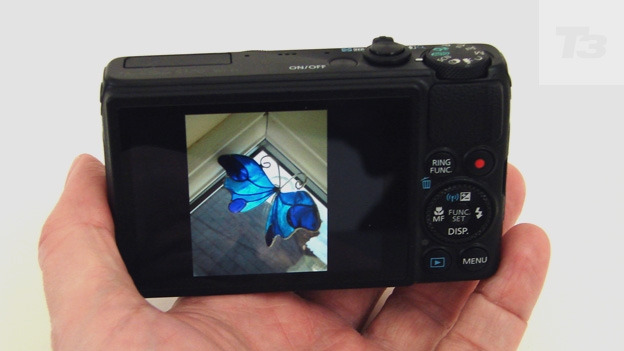Canon PowerShot S120 review
The Canon PowerShot S120 packs a next-gen processor that's 50% faster


-
+
Small yet solid
-
+
Touchscreen LCD
-
+
Top pic quality for its size
-
-
Pricey
-
-
No handgrip
-
-
No viewfinder
Why you can trust T3





Does paying a similar amount to an entry-level DSLR for a compact camera make sense? Check out our Canon PowerShot S120 review to find out.
With conventional wisdom suggesting smartphones have cannibalised the cheapie end of the camera market, business is proving much better for premium spec, premium priced devices. It seems photographers who value quality - in terms of images and build - as highly as sheer convenience, are still willing to spend, and spend more.
So expect to see increased numbers of the likes of the new Canon PowerShot S120, reviewed here. It updates the previous Canon PowerShot S110 with a reassuringly expensive manufacturer's suggested price tag of £449.99.
The 5x optical zoom, Wi-Fi equipped camera's improvements are claimed to include an auto focus response 50% quicker than its forebear thanks to a latest-generation Digic 6 Processor, while continuous shooting speed for sports or action shots now averages nine frames per second.
The other main selling point is, like its forebears, the lens ring control included here that provided us with more of a manual 'hands-on' feel than we'd usually get from a camera narrower than a pack of playing cards.
As expected, pick up the S120 and start playing with it and the higher-end device feels heavier and the build quality more solid than a similarly sized £199 snapshot does.
Though there's no handgrip at the front and only a small padded thumb rest at the back to provide a firm hold, the finish is similar to that of a proper DSLR. Which this isn't, of course, but at least you subtly get the impression there is shared DNA.
The headline feature of a top resolution of 12.1 megapixels from a 1/1.7-inch CMOS sensor may not sound like much, but this is the same chip as in the higher end Canon PowerShot G16, and comes coupled with optical image stabilisation, plus ISO12800 maximum light sensitivity for use in the dim without flash. Sounds good on paper, but how does the S120 measure up in practice?
Canon PowerShot S120: Controls
As touched on in our intro, the one control that stands out as different here is the S120's lens control ring, a feature also included on its predecessors dating back to the Canon PowerShot S95.
Give this a twist and the camera offers a shortcut to key settings - with the ability to customise camera functions to control any one of 23 options this way. As you'd imagine, at its most basic the lens ring provides means of manually zooming in or out with simply a twist of the wrist.
Otherwise, in terms of framing your shot, a standard zoom lever is provided on the top plate, ergonomically encircling the raised shutter release button, just like on any other lesser point-and-shoot.
On the S120, lens reach is the equivalent of a broad 24-120mm in 35mm terms, focal length settings incrementally displayed on screen, and the maximum aperture here is also very handy for achieving sharp low-light shots, and/or attractively shallow depth of field at f/1.8.
Though you can't spy a flashbulb at the front, a pop-up flash is included. It's neatly sunken into the Canon's top plate, with manual activation lever provided at the camera's side, falling conveniently within reach of the forefinger of the left hand.
While the back plate buttons here are small, as on any compact, they're still sufficiently large to be operated by a thumb press rather than having to dig in with our fingernails.
The only thing we take issue with is the dedicated button for recording video, which might have been better placed higher up so it more naturally falls under the thumb, or indeed placed more prominently on the top plate itself.
Otherwise, here the touch screen affords an added degree of extra control missing from most compacts that would fit in a shirt pocket. For example, we were able to tap a subject where it appears on screen to direct focus to that specific area of the frame.
We could also scroll up or down menu screens with the flick of a finger, as we'd do with an iPad or smartphone, so on the whole the S120's operation feels modern and intuitive.
We could also set the camera's drive mode to single shot AF or continuous AF, though the latter can be noisy in that we noticed a constant chugging noise as the camera is adjusting and re-adjusting its settings.
In a nutshell, the 10-option shooting mode wheel up top, scroll wheel at the back plus Lens Control Ring and touch screen cover all bases for photographers wanting hands-on control. The solid metal and plastic construction is tough yet lightweight enough for carrying in trouser or jacket pocket.
Canon PowerShot S120: Screen
Unsurprisingly, since the S120's appeal is as much its portability as its punch in the imaging department, the 922k-dot resolution LCD screen provided at the back for shot composition and review in lieu of any eye level viewfinder comes as the standard fixed (ie non-tilting) 3-incher.
In order, no doubt, to maintain as sleek physical dimensions as possible. Here, however, as noted it is also a touch screen. If you do want a camera of this size and in this price bracket complete with an EVF, then take a look at the Panasonic LF1, but we would argue that the very small viewfinders that come with smaller cameras are hardly worth it.
Canon PowerShot S120: Battery
With a rechargeable lithium-ion battery plus standalone mains charger supplied, once fully juiced the Canon PowerShot S120 is good for around 300 shots. This is slightly better than average for its class.
For example the rival Fujifilm XQ1 managed around 240 images from a fully charged battery, and the Panasonic LF1 offered 250 when we pitted them against each other in a recent group test for T3's print edition.
Get all the latest news, reviews, deals and buying guides on gorgeous tech, home and active products from the T3 experts
Canon PowerShot S120: Picture quality
Build quality aside, the larger than average sensor size plus a bright and fast aperture f/1.8 maximum aperture lens proves perfect for achieving shallow depth of field shots that ape a fully-blown DSLR for effect - surely why the S120's target enthusiast market will be considering such a camera.
The S120 further ups the image quality ante via its ability to shoot uncompressed Raw files alongside JPEGs, plus Full HD 1920x1080-pixels video at a whopping 60fps with stereo audio, with activation a once touch process.
Happily the full extent of the optical zoom can be used when recording has begun, its action steady with focus happily adjusting just as smoothly as it glides through the available focal range.
Along with the actual aperture offered by the lens, for creative effect there is the further option of selecting a background defocus mode, so subjects are isolated from their backgrounds to draw the eye.
The default setting here, however, is sharp and colourful images, while operation is quick and intuitive via its 3-inch touch screen in lieu of eye-level viewfinder.
If you're serious about your photography, but appreciate that a more snappy type of camera could well be worth it on occasion, then this is one compact that shouldn't disappoint.
Canon PowerShot S120: Verdict
Though not inexpensive at around £450 for a 12-megapixel, 5x zoom camera that's actually smaller than a pack of playing cards this is nevertheless an example that packs a considerable degree of heft into its unassumingly diminutive chassis.
Competitors in the premium compact market aside from the Panasonic Lumix DMC-LF1 referred to earlier include the cheaper Fujifilm XQ1, the pricier yet lovingly styled Olympus Stylus 1, plus Sony RX100 (mark I and II models). Against these the Canon actually comes out as a sensible, mid-priced, mid-tier option.
Canon PowerShot S120: Out now
Canon PowerShot S120: £449.99

Gavin Stoker has been writing about photography and technology for the past 20 years. He currently edits the trade magazine British Photographic Industry News - BPI News for short - which is a member of TIPA, the international Technical Imaging Press Association.